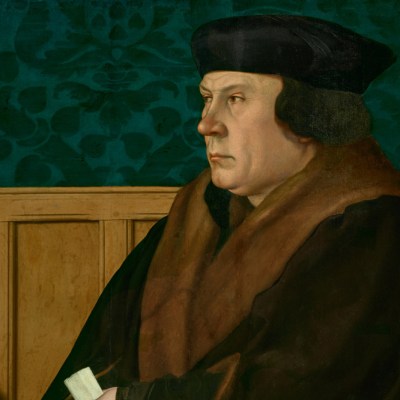‘Six Lives: The Stories of Henry VIII’s Queens’ is the first historical show at the National Portrait Gallery in London since it reopened last year, and the first exhibition ever to focus on the women who had the misfortune of marrying Henry VIII. But the objects in this exhibition are by no means purely historical. The show opens with six enormous black-and-white photographs by Hiroshi Sugimoto, taken in 1999, their seemingly life-like subjects actually waxwork portraits from Madame Tussaud’s. The six women have been a fixture of the Tussaud’s experience since 1861, testament to the evergreen interest in their lives and appearances.
Catherine Parr (1999), Hiroshi Sugimoto. Collection of Odawara Art Foundation, Kanagawa. © Hiroshi Sugimoto
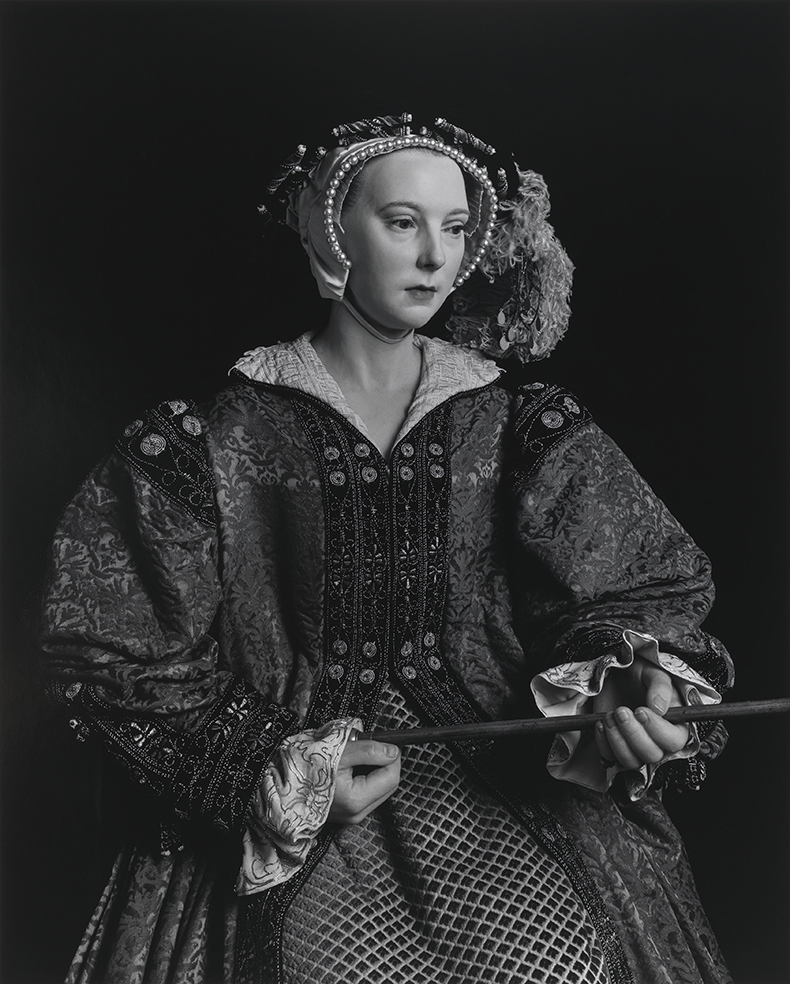
In the opening rooms the visitor encounters an array of Tudor memorabilia, theatrical props and costumes, revealing the different ways in which successive ages have imagined these women. Alongside some of the earliest ‘collections’ of the queens’ portraits, made to illustrate the earliest narrative histories of Britain, we see clips from Anna Boleyn (1920), a German Expressionist film directed by Ernst Lubitsch, and costume designs for the BBC drama The Six Wives of Henry VIII (1970). A costume for Catherine of Aragon for the hit musical SIX represents a 21st-century take on the theme: the designer Gabriella Slade’s postmodern take on Tudor costume employs vacuum-formed black vinyl, faux leather, sequins and Spandex to frame Henry VIII’s first wife in the visual style of a ‘contemporary global pop star’.
The variety of media in the exhibition furthers the NPG’s aim to create a more expansive understanding of portraiture. The combination of costume, textiles, jewellery, books and even modern souvenirs has contemporary appeal, challenging any lingering expectations that ‘portraits’ must mean oil on canvas (or, in the case of most Tudor paintings, oil on panel). But in this case especially, it also constitutes a historically-grounded approach to curation. For Tudor patrons and viewers, likenesses were by no means the only means of representing identity, or even the most important. For that they used heraldry, costume, ciphers (combinations of letters spelling out their initials or entire phrases) and the written word.
Catherine of Aragon costume from SIX the Musical (2020), designed by Gabriella Slade and made by John Kristiansen New York Inc. © Gabriella Slade presented under license from Ex-Wives Ltd/Victoria and Albert Museum
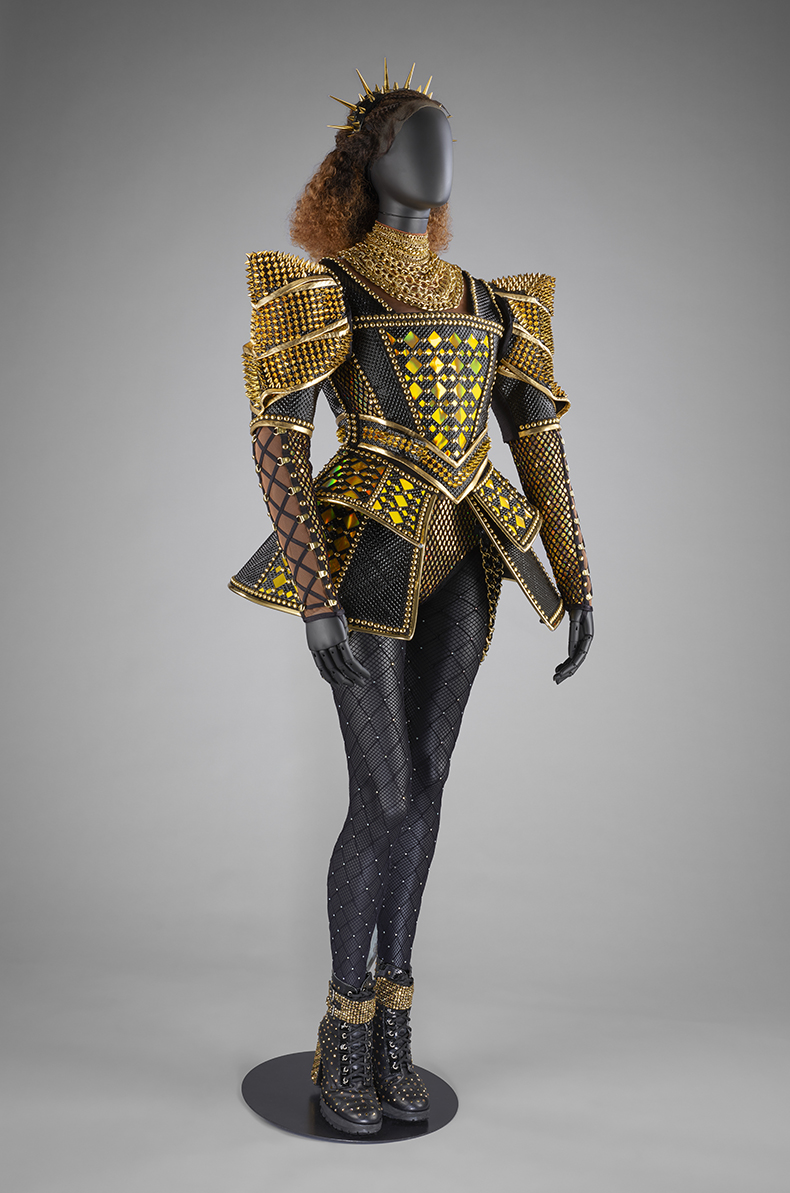
The presence of several queens’ own handwriting in letters, annotations and dedications in books creates another arresting point of contact with the women as people who once really existed. One of the most important loans – a newly conserved portrait of Katherine Parr, long believed destroyed by fire but here on public display for the first time – offers a further insight into her self-fashioning at court. The unusual grammar of the inscription on the jewels at her cuffs, ‘LAUS DEUS’ (in place of the expected ‘laus deo’), links it to Psalm 64, where the full phrase, ‘Tibi silens laus deus’ (remaining silent, praise to you, O God), suggests her awareness of the need for queens to guard their speech.
In the historical section of the exhibition, magnificence and threat jostle for supremacy. The queens were powerful as political movers and patrons; they were sometimes left in charge of the country when the king went abroad, as Parr was in 1544. But, as the introductory text reminds us, marriage was not a partnership between equals in the 16th century and a queen was still the king’s subject, however much he trusted her to exercise power in his absence. In room after room, the ease with which all evidence of a queen could be erased is chillingly clear. The speed with which Anne Boleyn’s heraldry was replaced with Jane Seymour’s in stained glass at Hampton Court is just one example. The fact that so few reliable portraits survive for the two queens Henry executed, Anne Boleyn and Catherine Howard, suggests that they were subject to a state-sponsored campaign of obliteration after their deaths.
Katherine Parr (c. 1547), attributed to Master John. Private collection. Photo: Fraser Marr Photography
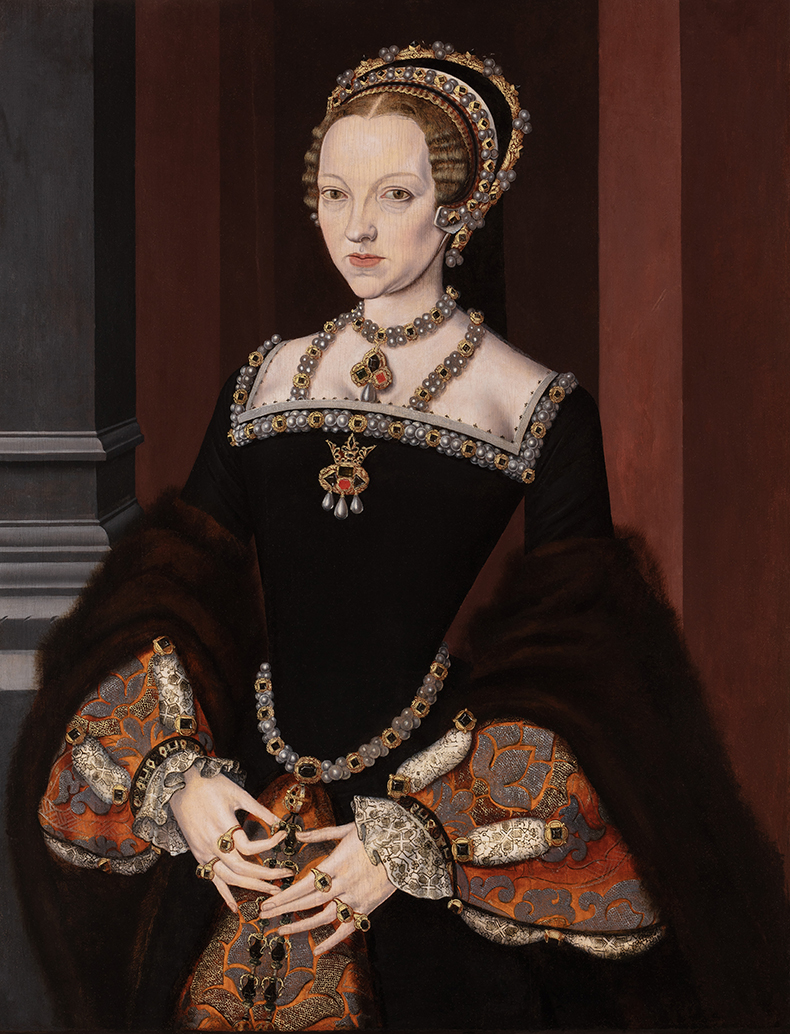
Henry himself is inescapable. He is, after all, the reason for the women’s shared identity (although, as the diagram at the exhibition entrance points out, there were many degrees of relation between the women in their own right, too). A magnificent full-length portrait of the king from the workshop of Hans Holbein the Younger is present, though rightly sidelined, at the entrance. But a more revealing image hangs in the room dedicated to Catherine Howard. This portrait, an early 17th-century copy of an original from c. 1542, represents the king in costume comparable to an Ottoman dolman, a kaftan-like garment seen in portraits of the Ottoman emperors. The choice no doubt relates to Henry’s well-recorded fascination with Turkish culture; rulers from both sides of the religious divide borrowed each other’s iconography to enhance their own magnificence. But the presence of the garment here, in a portrait made the same year that Henry executed his fifth wife, may be more telling. Ottoman emperors were famous for keeping a harem of wives and concubines; in the 1540s, Henry’s own marital turnover was raising eyebrows across Europe. As early as 1538, his prospective bride Christina of Denmark had sought ‘pledges’ for her safety, after ‘the King’s Majesty was in so little space rid of three Queens’. Even Katherine Parr, Henry’s six wife and his third named Katherine, pragmatically signed her documents with the cipher KP, for the avoidance of confusion. Henry’s embrace of Turkish costume at this date may be a defiant reclamation of his identity as the ‘second Turk’, as Catherine of Aragon had referred to him in 1533.
Still from Anna Boleyn (1920), directed by Ernst Lubitsch. Friedrich-Wilhelm-Murnau-Stiftung, Wiesbaden
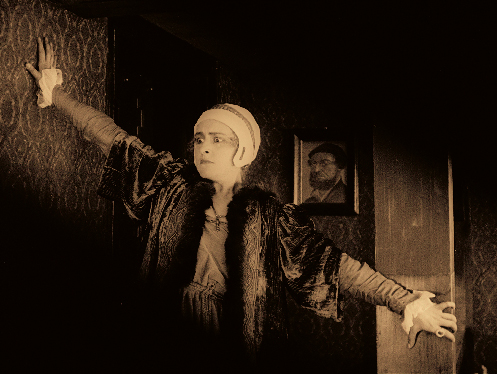
This visitor returned from the historical galleries to the contemporary with a renewed appreciation for more recent imaginative encounters. Henry’s obliteration of past wives is what has made such imaginative recreation a necessity. Just as art reveals the disturbing disposability of 16th-century women, it also provides the grounds for the reconstruction of their identities beyond a simple likeness: in their patronage, and in the kinds of classical and biblical role models they used to shape their identity. Art also serves as the expressive vehicle for more recent attempts to re-encounter these women – not just as subjects of that useful but reductive mnemonic ‘Divorced, Beheaded, Died’, etc – but perhaps even on their own terms.
‘Six Lives: The Stories of Henry VIII’s Queens’ is at the National Portrait Gallery, London, until 8 September.

